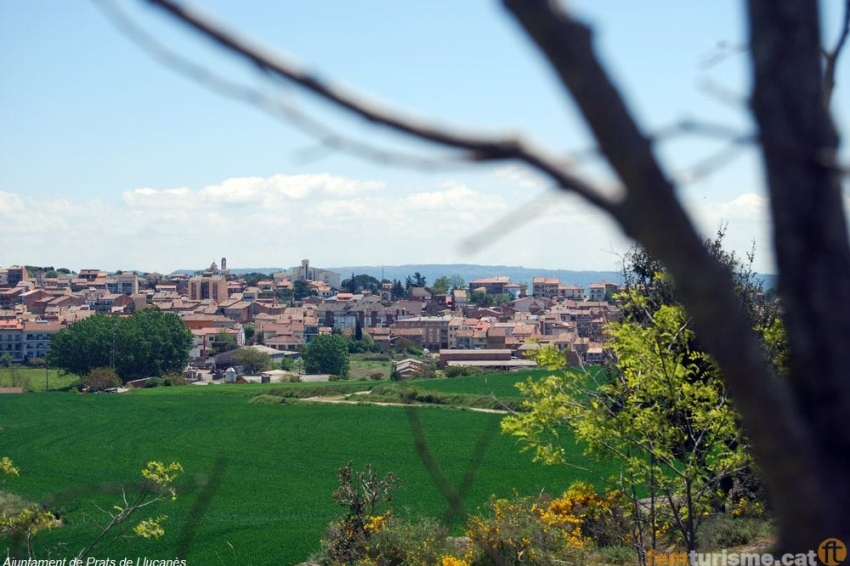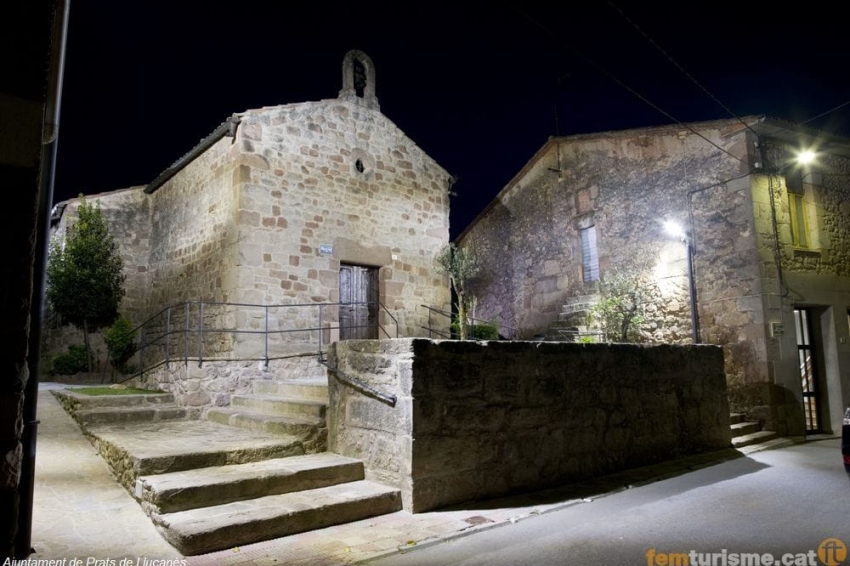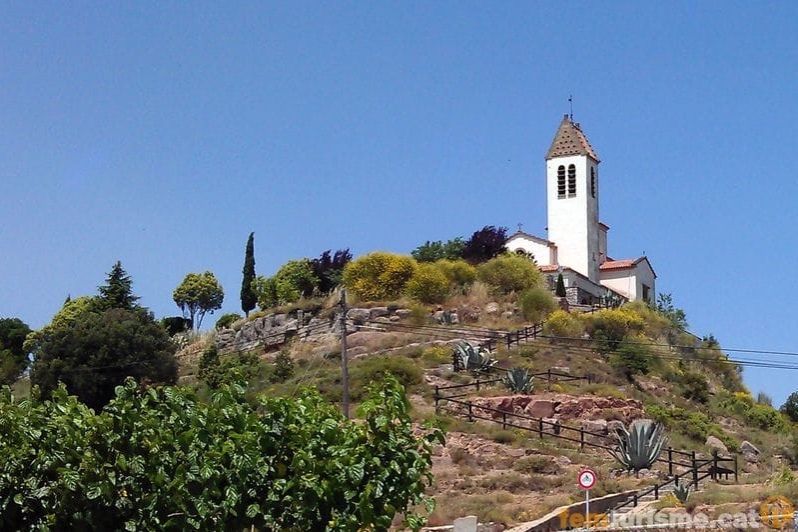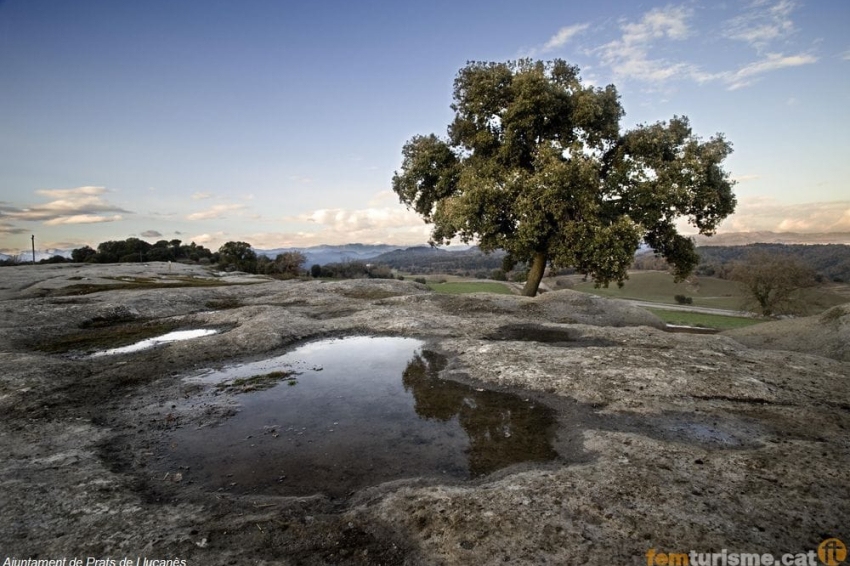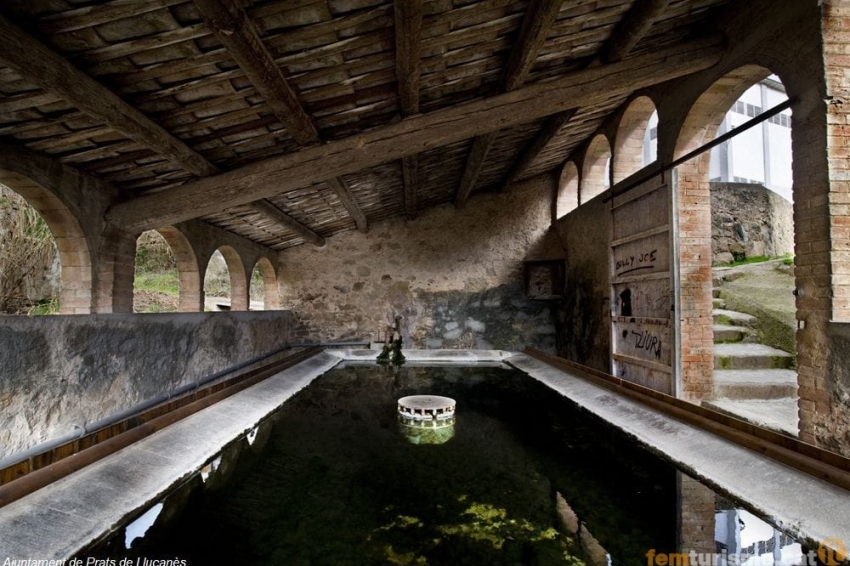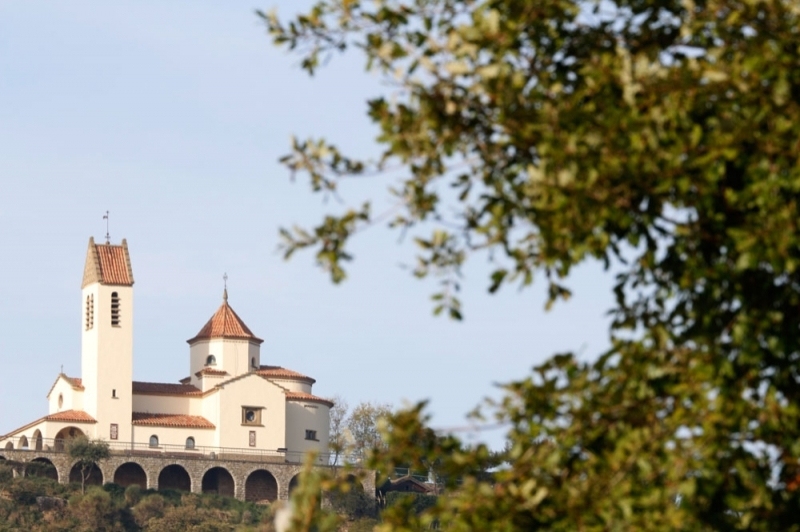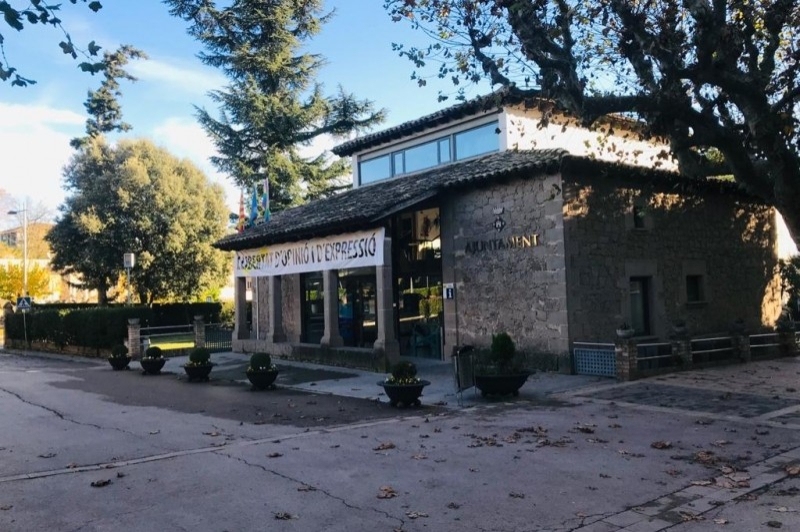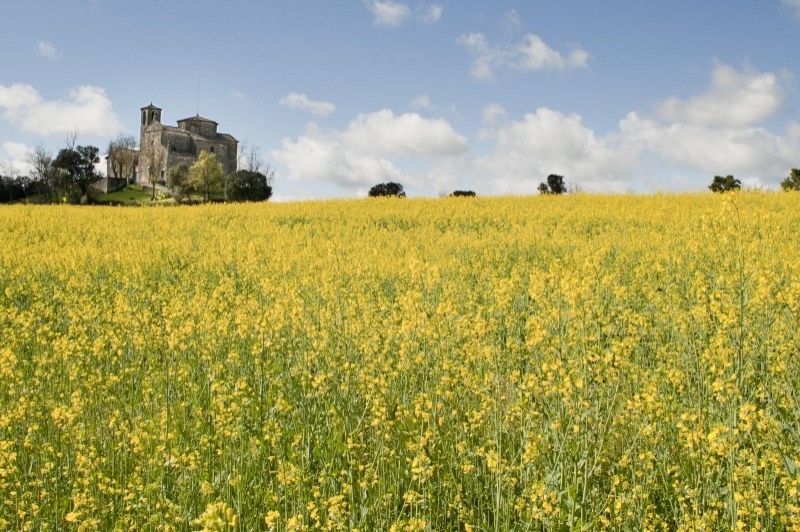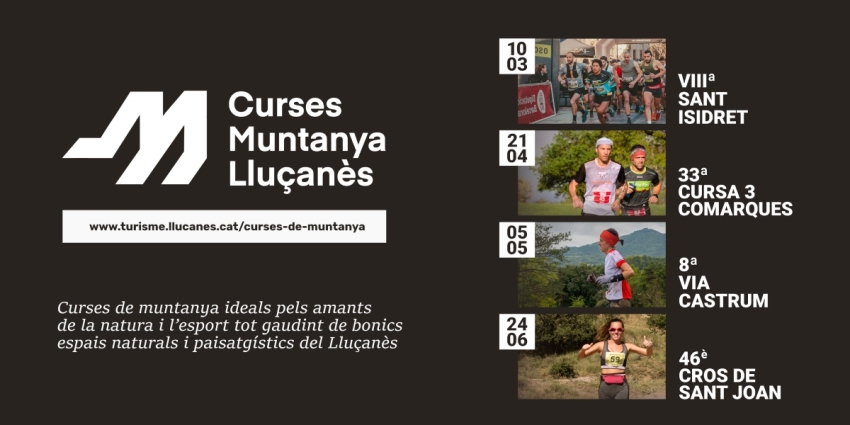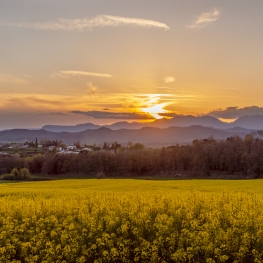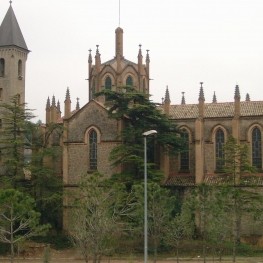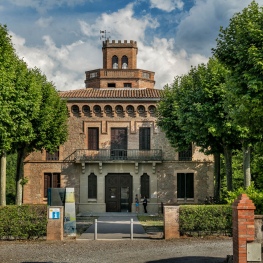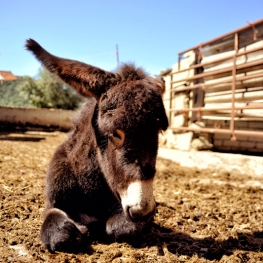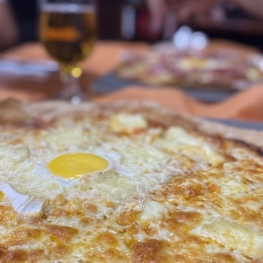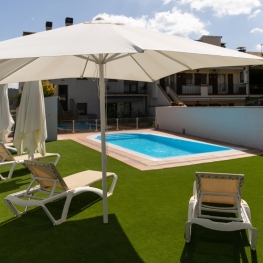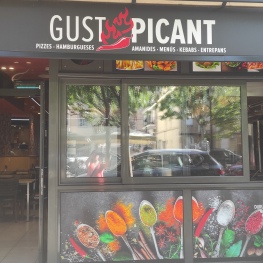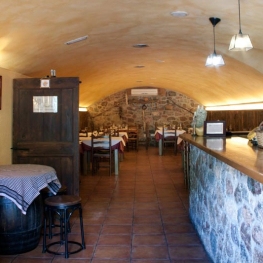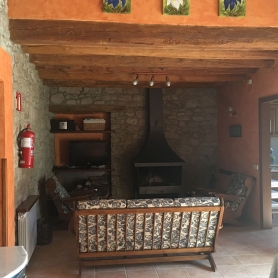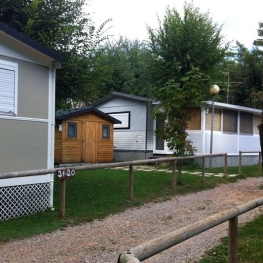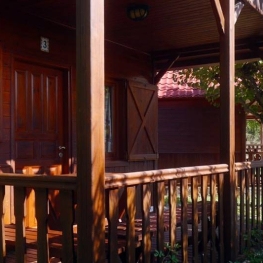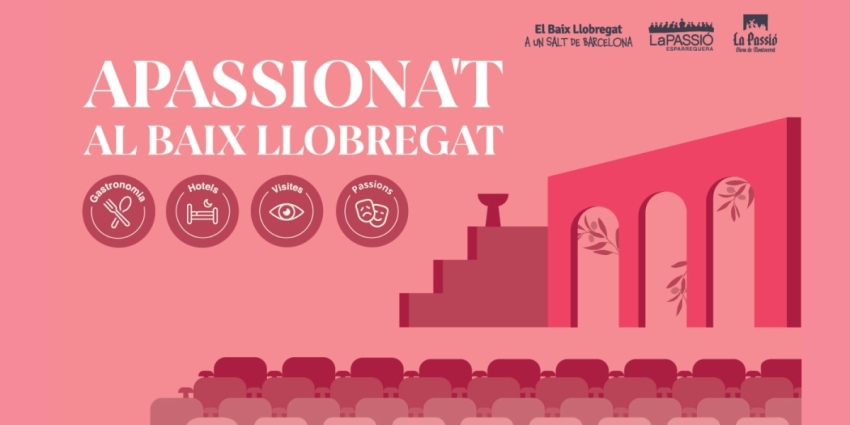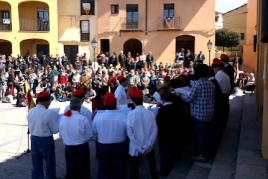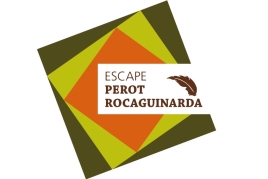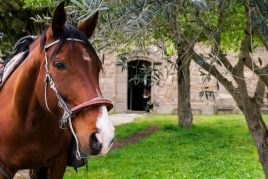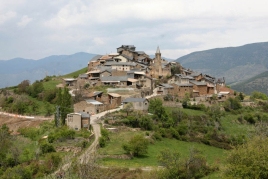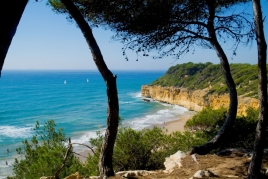Prats de Lluçanès
Prats de Lluçanès is a small town of more than 2,500 inhabitants located in the northeast of the Central Catalan Depression, in Lluçanès. Capital of the Lluçanès region, it occupies a territory of 13:29 km2.
The first written document that refers to Prats de Lluçanès dates back to the year 905 and is the act of consecration of Santa Maria de Lluçà.
From the beginning of the 11th century and until well into the 15th century, the population of Prats was not concentrated in any urban centre, but rather in important groups of country houses, depending mainly on the municipalities of Torroella and Soler de n'Hug. The first church of San Vicenç, the patron saint of Pradenc, is not documented as a parish until the year 1063, and it is around it that the birth of the town of Prats took place.
In 1611 the subveguería of Lluçanès was established, which lasted until 1716 and the Consell de Jurats del Lluçanès was created . In 1681 Charles II granted Prats de Lluçanès the title of Leal Villa. On February 5, 1714, in the last stage of the War of Succession, the town was burned by the troops of the Bourbon Philip V, commanded by Carrillo de Albornoz, Count of Montemar, a date and events that are still remembered every year by touching the bells for Saint Agatha's Day.
After the Carlist wars, which began in Prats de Lluçanès with the Galceran revolt, the town experienced a period of strong cultural progress and continued with the general improvement begun years before. In 1879 the Catholic center was built, followed by the construction of the Sanctuary of Lourdes in 1881. Also this year, 1881, the bell tower of the parish church was finished and the current cemetery was built. Two decades later, in 1905, the Josefina Sisters arrived in the town to take charge of the Hospital and the urbanization of the promenade began. In 1907 a new convent for the Dominicans was inaugurated.
Prats de Lluçanès has become the undisputed capital of the Lluçanese region, of which it constitutes the most important and dynamic population. The town, which in the course of its history has suffered great damage due to plagues and wars, was rebuilt, almost in its entirety, at the beginning of the 18th century. Some houses with lintel portals in the shape of a semicircular arch have been preserved from before this time, such as Cal Bernat. But most of the oldest houses were built between the years 1720 and 1770. In the oldest streets of the city you can see the engraved lintels of the houses, as well as some very interesting stone windows and balconies.
As neighborhoods with more tradition, we can highlight the old Bonasort street, before the Llims, with the chapel that gives it its name, around which the first nucleus of the population was configured, Plaça Vella, the scene of many traditions and city customs; the Tres Fonts and Torrent area popularly known as the safareig , the Plaza Nova and the church square. Among the most modern places, the neighborhoods of Plaza de Catalunya, Bassa dels Bous, Plaza de los Païs Catalans and, above all, Paseo del Lluçanès stand out.
The town preserves a good part of the summer towers built in the first half of the century. Remarkable stone buildings remain on Calle Mayor, Plaza Nova and Calle de la Bonasort. Of all the most notable houses in Prats, Cal Camps stands out in a special way for the fact that the most illustrious people of an entire era stayed there.
Pra ts preserves buildings from the modernist and noucentista era. Among the most interesting we can highlight the municipal slaughterhouse, which preserves a magnificent stained glass window and the old Cal Casals factory, the current headquarters of the Post Office, and the municipal cemetery that preserves modernist elements, among others. Another of the most interesting buildings in the city, now gone, was the Cal Duran roundabout.
The area occupied by the municipality of Prats was structured in the period after the repopulation of Catalonia, around some territorial units or hamlets, the names have survived to this day. It is worth highlighting the hamlets of El Marçal and El Clot del Vilar, Plangiverc, El Molí del Cingle, El Soler de n'Hug from 1176, the Galobardes farmhouse and mill, La Farinera, Font calenta, Serra-seca or La Pedragosa del 1392. In the Raval neighborhood, there are Les Vinyes, La Roca del Feliu, Cal Guerxo, Puigvistós and Cal Magí. Also noteworthy are La Villa de Llanars from 1167, La Caseta, El Coll-lliscador and Cal Butxaca . In the northern part of the town we find the large farmhouses of Cal Dama and El Grau from 1174. In the southern part of the municipality is Sorribes from 1434, La Casanova de los Riambau and the large manor house of Santa Llúcia.
On the other hand, the municipality has a large number of sources. Leaving the town, behind Roca de En Bras street we find the Ti Fountain and the Xambó Fountain, in an ideal place to relax. A few minutes away is also the abundant Font de la Vila, with very good waters. On the Navàs road is the Coromina Fountain. On the same road, when crossing the Rec del Soler, about a hundred meters below the bridge, there is a waterfall that forms a pool. Inside the cave made by the rock, a drip of very pure and crystalline water falls and forms a puddle; It is a picturesque and pleasant place, within which is the Fuente del Clotet. Down the road, we find the Rec de las Alforges, from where the Fuente de la Cugulada, the Fuente de las Alforjas and the Huerta de la Coma del Forn emerge. On the Sant Feliu Sasserra road there is the Freda Fountain and the Calenta Fountain , further down the Farinera one. Les Tres Fonts sprout from the Rec de Prats . On the side of the Lourdes sanctuary we find the Fuente de la Residencia and the Bernadeta Fountain. In the direction of the sports area is the Guillera Fountain and the Marçal Fountain. One kilometer from the town springs the well-known Fuente de las Coves, a very picturesque place due to the number of caves that the rock forms.
Prats de Lluçanès tourism office
You may also be interested in: Discover the Sustainable Destinations of Catalonia | Biosphere Destinations in Catalonia. A commitment to sustainability.
What to do
Centre d'interpretació de l'Església de Cal Pons
Puig-reig (a 13.2 Km)The Interpretation Center of the Colonia Pons Church, through three museum spaces,…
La Torre de l'amo de Viladomiu Nou
Gironella (a 12 Km)Transported back in time and enjoy a building protected as a cultural…
Fuives, centre mundial del ruc català
Olvan (a 13.3 Km)Stroll along the paths of Fuives for close more than a hundred…
Where to eat
Bar Restaurant Xato
Gironella (a 12.8 Km)Place your order for pizzas, hamburgers, tapas... at the Xato Bar-Restaurant and…
Apart Hotel Restaurant Cal Marçal
Puig-reig (a 13.8 Km)Small apart hotel located in the Lower Berguedà also has bar and…
Restaurant Gust Picant
Berga (a 18.2 Km)In the Picant Gust restaurant you can enjoy very affordable menus and…
El Recó de l'Avi
Guardiola de Berguedà (a 28 Km)Typical homemade cuisine, with oak-grilled meats, a wide variety of tapas and…
Where to sleep
Apart Hotel Restaurant Cal Marçal
Puig-reig (a 13.8 Km)Small apart hotel located in the Lower Berguedà also has bar and…
Can Masover Xic
Lluçà (a 7.2 Km)Cal Masover Xic, is a rural house located in the Rocadenbosch farmhouse…
Càmping Puigcercós
Borredà (a 13 Km)The campsite stands out for its quiet atmosphere and familiar character, has…
Càmping Riera de Merlès
Borredà (a 9.5 Km)If you are looking for rest and enjoy the tranquility, this is…

